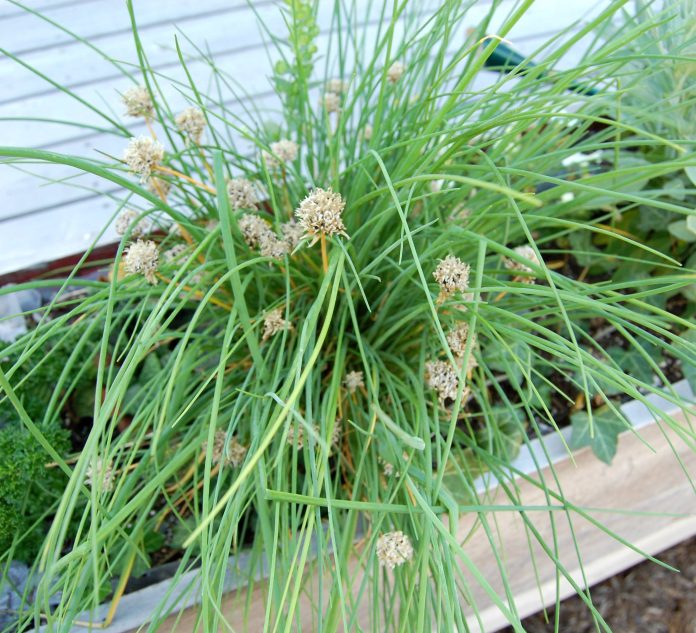
Cooking is a year-round endeavour, like eating.
Gardening on the other hand, gets interrupted by winter. This time of year, we busy ourselves harvesting and preserving the many goodies that our gardens produce like seeds, fruits, vegetables, and herbs.
We often overlook the opportunity to plant food crops that survive our winters nicely and return in spring. Like perennial herbs.
The herbs that you plant or sow from seed now produce a much greater abundance next spring than the same species planted after the snow melts. The few weeks that remain in the current season encourage new roots and a more established plant.
The results are amazing come next season.
Here is our list of favourite perennial kitchen herbs that we recommend for planting now:
Chives. Allium schoenoprasum. The native, perennial onion flavoured plant is one of the easiest plants to grow if you have 5 hours of sun or more in your garden or container. Very winter hardy, the dark green, hollow spears poke up through the soil in April and grow like crazy for several months. The best stems for preparing for the table are the young, tender ones. Encourage them all season long by harvesting often and cutting the green leaves low to the plant. Bees love chive flowers. They transplant well and should be divided every three to five years. Mark found his current crop of chives sitting on top of a compost heap at the allotment gardens at the Leslie Street spit, they are that easy to grow.
Dill. Anethum graveolens. Made famous by the pickle, dill has more uses than jarring the seeds up with cucumbers. Feathery dill leaves add flavour to salads and soups. Dill seeds perk up bread and salad dressing. The plants grow two to three feet tall in the sun. It is a hardy annual plant. Let it go to seed in your garden you will enjoy having it most everywhere next season.
Mint. Mentha. Much like dill, when you plant mint, you have created a marriage with it that is very difficult to divorce. Peppermint, spearmint, apple mint, cat mint, to name a few, are all useful in the kitchen and in drinks. Cut stalks now near the bottom of the stem and hang upside down for ten to fourteen days. Bees love all mint while in flower. Sun or part shade.
Oregano. Origanum vulgare. Italian cooking often features this tasty herb, which grows to about 25 or 30 cm tall in a sunny garden. We often plant it in containers where it falls over the edge to create the impression that we are so good at growing plants some try to escape. Dry oregano by cutting the stems 2 cm from the bottom, preferably before the flowers open. Hang to dry in a warm, shaded place for about two weeks.
Sage. Salvia officinalis. Known for its healing properties, its use in the kitchen extends to flavouring meats, stuffings and bean stews. Use just a few leaves the first year, taking more as the plant matures over years. After it gets established, sage takes long periods of drought. Grows to 20 or 30 cm high, loves the sun. Sage smudging ceremonies are common in many Indigenous cultures and are used to cleanse the past, popular at weddings. Sounds like sage advice to us.
Thyme. Thymus vulgaris. Choose from lemon, creeping and common thyme. This plant has been hybridized to create a variety of purple, red, and bronze flowering varieties, mostly in the genre of “creeping” thyme, a substitute for lawns that is growing in popularity. While in bloom, bees love all thyme. Use fresh or harvest leaves this time of year and hang to dry in small bunches. Kitchen use includes turkey stuffing and soups. We would tell you more, but we have run out… of thyme.
Two elements of growing culinary herbs that almost all have in common is an appealing scent and resistance to insects and disease. Rub your fingers through the foliage of most herbs to release the flavourful oils and inhale the savoury aroma.
Mark Cullen is an expert gardener, author, broadcaster, tree advocate and Member of the Order of Canada. His son Ben is a fourth-generation urban gardener and graduate of University of Guelph and Dalhousie University in Halifax. Follow them at markcullen.com, @markcullengardening, and on Facebook.

